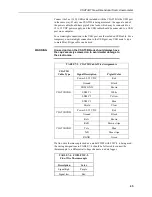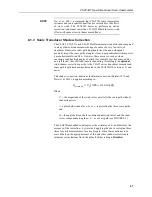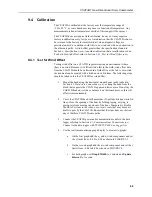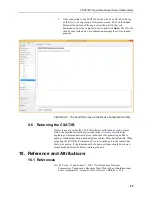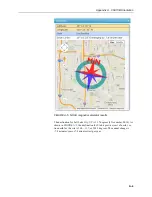
CSAT3B Three-Dimensional Sonic Anemometer
58
TABLE 8-5. Diagnostic Word Flags
Bit #
Hex
Value
Decimal
Value
Flag Name
Description
Troubleshooting
0
0x0001
1
Low
Amplitude
Ultrasonic signal is too
small
There may be an obstruction in
the anemometer path or on the
transducer face
1
0x0002
2
High
Amplitude
Ultrasonic signal is too
large
An obstruction, in the
anemometer path or on the
transducer face, was removed
2
0x0004
4
Tracking
The signal lock is poor
There may be an obstruction in
the anemometer path or on the
transducer face
3
0x0008
8
High Delta C
Difference in the speed of
sound between the three
non-orthogonal axes is
greater than 2.360 m·s
-1
(~4 °C @ 25 °C)
The anemometer path length
may have been altered or the
anemometer head is
structurally damaged
4
0x0010
16
Acquiring
Indicates that the
anemometer is trying to
acquire the sonic signal
There may be an obstruction in
the anemometer path or on the
transducer face or a transducer
has failed
5
0x0020
32
Low Voltage
The supply voltage to the
anemometer is below
9.0 VDC
Check the power supply or
investigate whether cable
lengths are excessive
6
0x0040
64
Trigger Error
A measurement trigger has
not been received for at
least 1 sec, or the time
interval between triggers is
varying by greater than 5%
Check wiring to the data
logger, and check the data
logger program for the
expected trigger rate
7
0x0080
128
Internal
Humidity
Warning
The relative humidity
inside the CSAT3B block
is greater than 80%
Change the internal desiccant
canister (see Section
8
0x0100
256
Memory Error
There is a signature
mismatch from the
calibration file or another
section of memory
Resend an OS and/or cal file to
the CSAT3B; contact
Campbell Scientific for details
8.4.3 SDMTrigger()
The
SDMTrigger()
is an SDM Input/Output instruction that controls SDM
devices that support the group trigger protocol, including the CSAT3B. Up to
15 group-trigger devices can be connected to the SDM bus. All group-trigger
devices are triggered for simultaneous measurements with the SDMTrigger.
The data from each device is retrieved with the appropriate device-specific
instruction.
The
SDMTrigger()
instruction is unnecessary when using CPI
communications because group triggering is integrated and enabled into the
CPI protocol. Multiple CPI devices will inherently be synchronized.


